On this page
- Introduction
- How it works
- About the influenza 2023 PVSC survey
- Survey results – up to and including 31 July 2023
- Table 1: Summary of text message responses, 1 April through to 31 July 2023
- Table 2: Responses by vaccine and adverse event, 1 April through to 31 July 2023
- Figure 1: Most frequently reported adverse events following influenza vaccine, percentages, 1 April through to 31 July 2023
- Table 3: Most frequently reported adverse events following influenza vaccine, percentage, 1 April through to 31 July 2023
- Figure 2: People that visited a doctor after vaccination with the influenza vaccine, 1 April through to 31 July 2023
Medsafe advises people NOT to make any decisions about vaccination based on information contained in this report. If you have questions or concerns about receiving a vaccine, please speak to a health care professional.
Introduction
The information from the Post Vaccine Symptom Check (PVSC) survey supports ongoing safety monitoring of the influenza vaccine used in Aotearoa New Zealand. Find out more (external link) about how we monitor vaccine safety.
How it works
A sample of the population in New Zealand who receive a vaccine are randomly selected to participate in the survey in the days following their vaccination appointments.
A Post Vaccine Symptom Check (PVSC) survey is currently underway for the 2024 flu season.
If a person is randomly selected to be part of the survey, they are sent an invitation text. This text asks if they or their child have had a side effect after their vaccine. They could respond with “YES”, “NO”, or “STOP”. If they respond “YES” or “NO” they will receive follow up text messages with links one or more surveys. If they do not want to receive these text messages, they can respond “STOP”.
The surveys contain questions on early onset adverse events, commonly experienced adverse events, impacts and adverse events may have had on daily life and vaccination experience. Other survey questions may ask about rare diagnoses that may have occurred in the weeks after their vaccination.
Participating in the survey is optional. If individuals do not want to participate in the survey, they do not have to give a reason, and it does not affect the care people receive.
If an individual decides to participate but change their mind later, they have no obligation to continue and can opt out at any time.
You do not need to be a health professional to submit a report and you do not need to be certain that the reaction was caused by the vaccine.
If you do not receive a text
If a person does not receive a text message asking if they want to participate in a PVSC survey, it could be that they were not randomly selected, or their contact information is not up to date.
If an individual does not receive a text to be part of the survey, but they or their dependent(s) experienced a reaction, they can still report it to the Centre for Adverse Reactions Monitoring (CARM) (external link).
If you are concerned about any reactions, you or your child experiences, or if you or your child are unwell, please contact your GP, healthcare provider or Healthline on 0800 358 5453.
About the influenza 2023 PVSC survey
On 1 March 2023, the influenza vaccine annual winter rollout began. The influenza vaccine targets four strains of influenza.
The influenza vaccine PVSC campaign began on 1 April 2023. This campaign used a QR code registration format, where consumers were able to register at the vaccination sites to take part in the survey. Using the QR code format for registration requires active registration from participants, so resulted in lower overall responses than text message (SMS) based PVSC campaigns. If individuals received a concomitant dose of influenza and bivalent vaccines (i.e., both at the same time), they were recommended not to register via QR code, as they were eligible to be contacted via text message to participate in the PVSC survey.
If a person registered by QR code, they were sent, via text message, a link to the ‘Day 7 survey’. Participants were then sent another survey 42 days after their vaccination. Collection of influenza PVSC data is ongoing.
The information on this page shows the data from the population of people who registered to participate in the influenza PVSC campaign. It does not represent the total number of people who were vaccinated nor the total number of people who experienced an adverse event after their vaccination. Not everyone will report a reaction to the vaccine through the PVSC campaign, some might submit a report to the Centre for Adverse Reactions Monitoring (CARM).
The number of vaccine adverse event reports in a PVSC campaign can be influenced by the number of participants, the nature of the symptoms (e.g., how painful the vaccination was), and other factors (e.g., concurrent viral infection or other medicines taken), which vary over time.
The information presented below is limited to responses to the survey for influenza vaccinations in those aged 18 years and older. Data collected from the influenza PVSC campaign is also in line with data collected from clinical trials and from post-marketing surveillance in New Zealand and overseas. Based on this data, we have not identified any new safety concerns for the Influenza vaccine.
Survey results – up to and including 31 July 2023
From 1 April through 31 July 2023, there were 270 text messages sent to people who signed up via QR code to take part in PVSC. Of these, 145 completed survey responses were received (Table 1).
Of the 145 responses received (Table 2):
- 46% reported that they experienced at least one adverse event/reaction to the vaccine
- 54% reported that they did not experience an adverse event.
The most frequently reported adverse events were injection site reactions, fatigue or tiredness, headache, muscle aches or pain, flu symptoms, chills, and dizziness or feeling lightheaded (Figure 1, Table 3). These are common adverse reactions linked to the immune response following immunisation.
Thirteen percent of people who participated in the Influenza vaccine PVSC campaign (19 out of 145) reported missing work or other daily activities. Of these, the majority reported missing one day or less. Around 2 percent (2.1%) of people visited a doctor after vaccination (Figure 2).
Table 1: Summary of text message responses, 1 April through to 31 July 2023



Table 1: Summary of text message responses, 1 April through to 31 July 2023
Table 2: Responses by vaccine and adverse event, 1 April through to 31 July 2023



Table 2: Responses by vaccine and adverse event, 1 April through to 31 July 2023
Figure 1: Most frequently reported adverse events following influenza vaccine, percentages, 1 April through to 31 July 2023
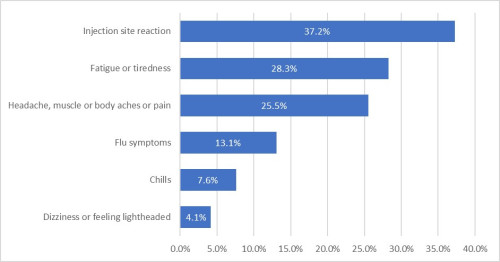
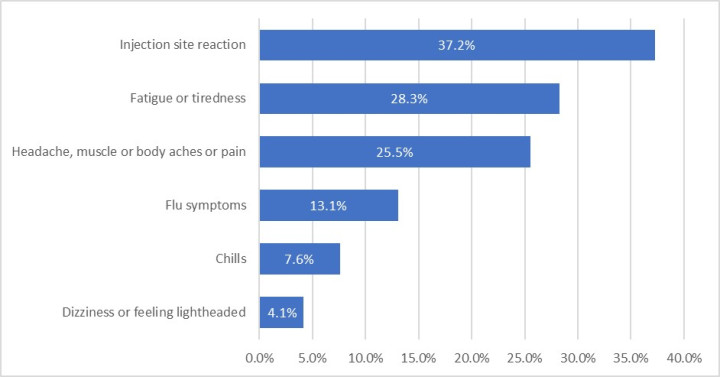
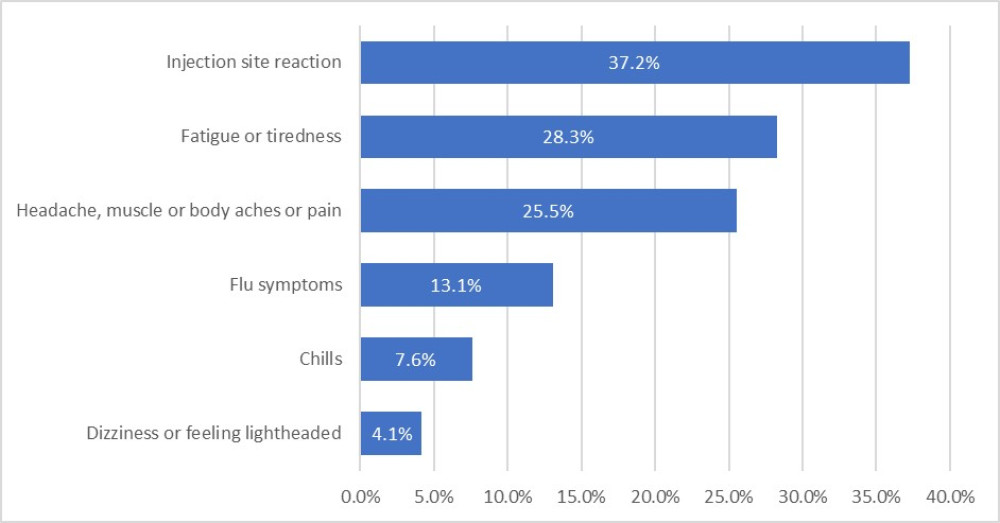
Figure 1: Most frequently reported1 adverse events following influenza vaccine, percentages2, 1 April through to 31 July 2023
Table 3: Most frequently reported adverse events following influenza vaccine, percentage, 1 April through to 31 July 2023
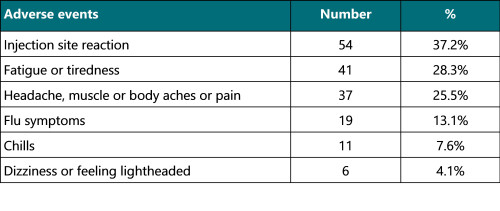
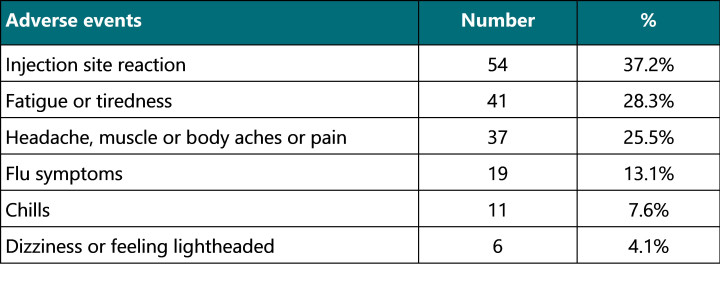
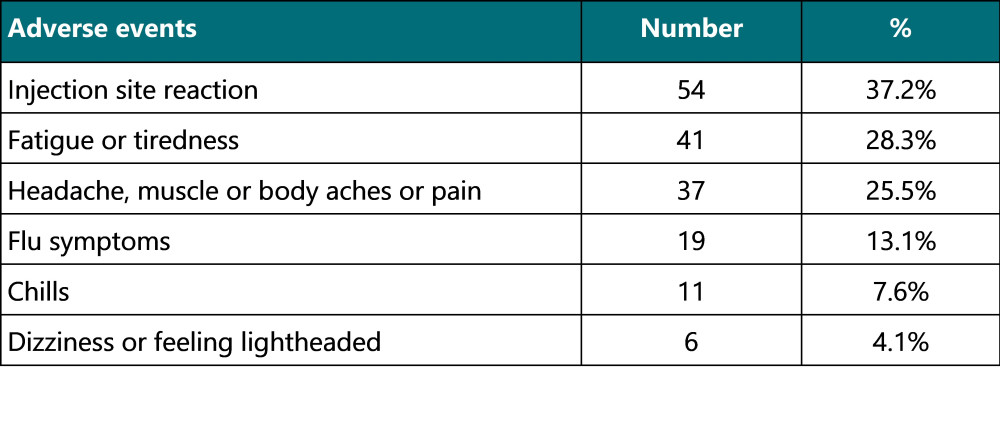
Table 3: Most frequently reported1 adverse events following influenza vaccine, percentage2, 1 April through to 31 July 2023
Notes:
- PVSC survey answers may come from one person, but that person may report more than one adverse event. As with any adverse event reports, not all symptoms reported may be caused by the vaccine; they may be coincidental and due to other causes.
- For the percentage calculations, the numerator is the number of times the reaction was reported, and the denominator is the total number of participants from which responses were received for the influenza vaccine.
- Adverse events reflect wording of survey questions presented to participants, this may differ from other PVSC campaigns, as survey question wording is subject to change.
Figure 2: People that visited a doctor after vaccination with the influenza vaccine, 1 April through to 31 July 2023
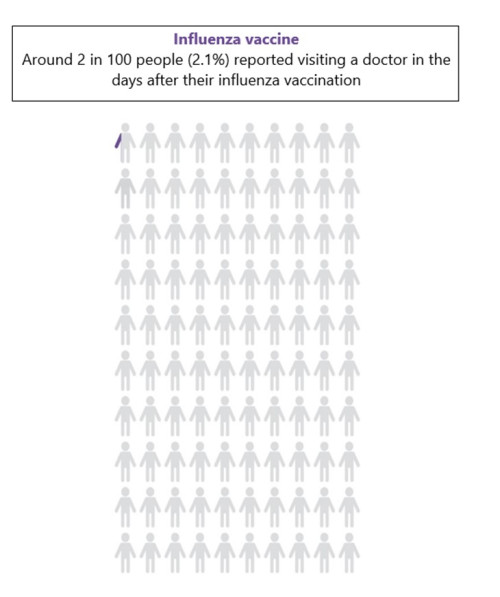
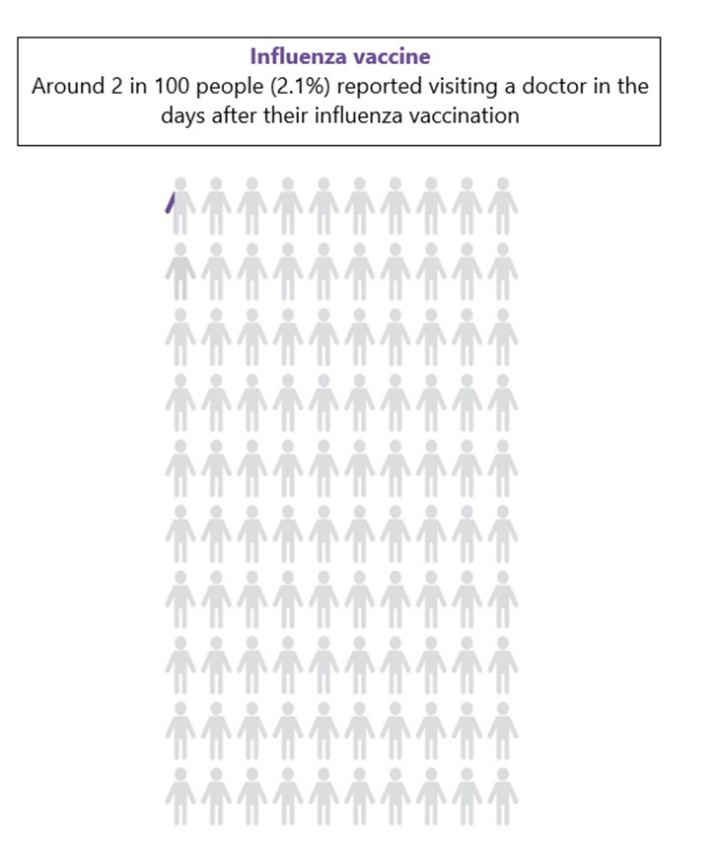
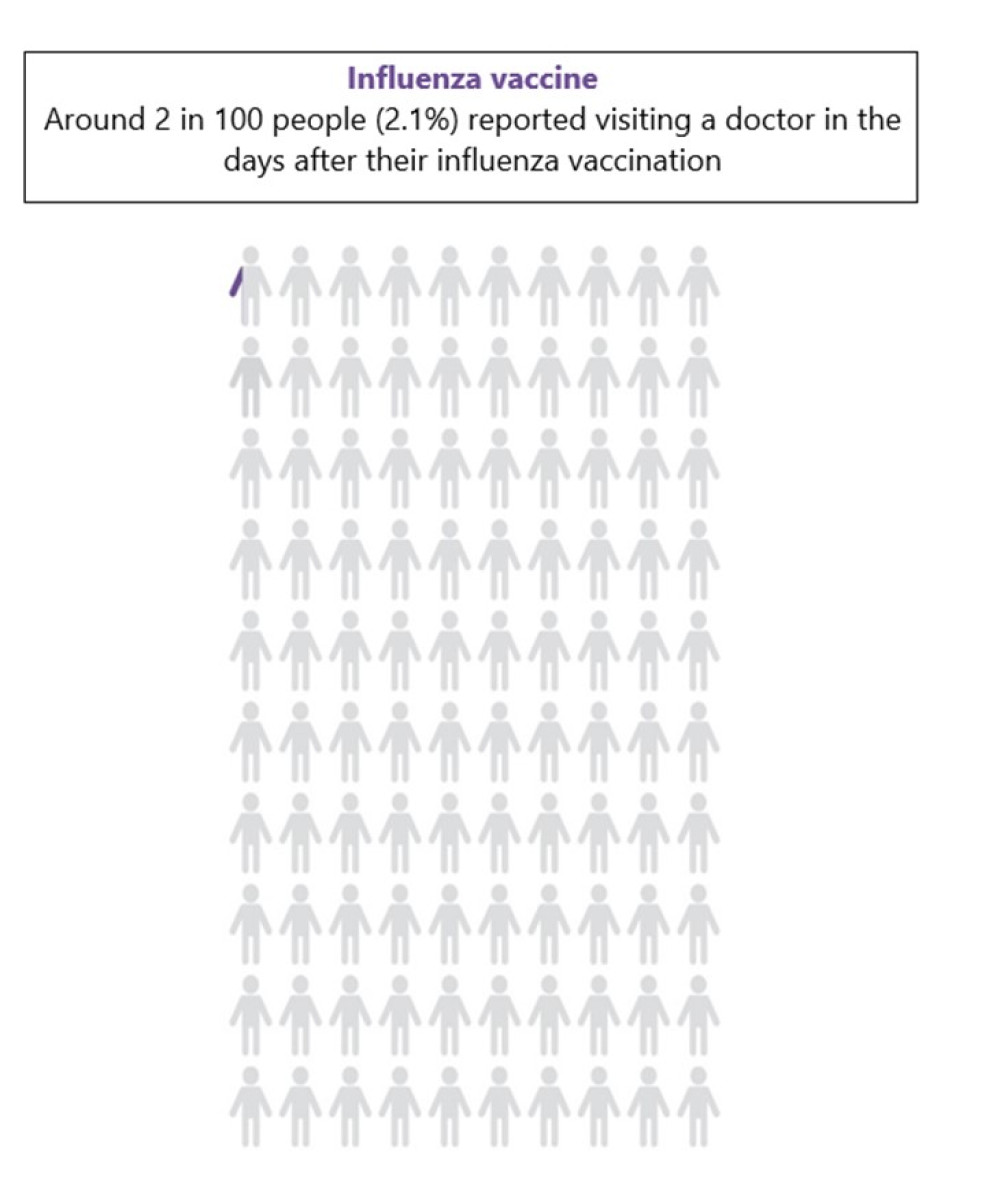
Figure 2: People that visited a doctor1 after vaccination with the influenza vaccine, 1 April through to 31 July 2023
Note
- The PVSC survey does not specifically ask for the reason why the person accessed medical care in the days following vaccination. Therefore, medical attendance reported may or may not be related to any adverse events reported.